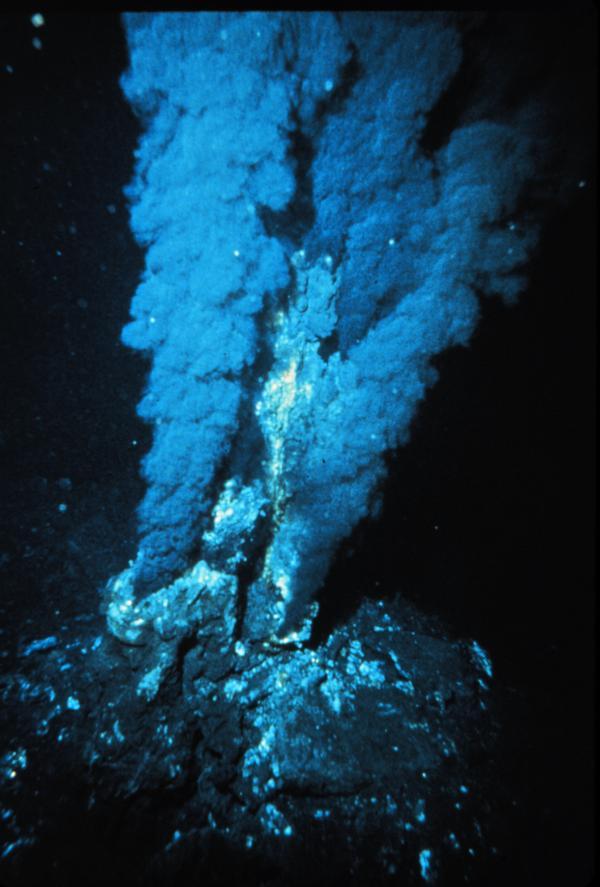New animals live in exceptionally harsh environments
A new bacterium, Pyrococcus CH1, can live in an environment of 80 to 105 degrees Celsius, and is capable of self-dividing under hydrostatic pressure of 120 Mpa (1000 times the air pressure), newly discovered.
This discovery was made by microbiologists in the Microbiology Laboratory in harsh environmental conditions (Cooperative Research Unit between CNRS, Infremer and Western Brittany University UBO), with the support of the Maritime Institute. Yang University (China) and Earth Science Laboratory (JRU CNRS, ENS Lyon and Lyon University). The neck of the bacterium was isolated from the specimens of the 'Serpentine' vessel (1) used by the Franco-Russian research group to explore high-pressure areas of the central Pacific for six weeks in search of New hydrothermal gas mouth. The article about this discovery is published in The ISME magazine (May issue).
Extreme bacteria . the world is full of surprises
Studies of extreme bacteria, animals that live in harsh special conditions that do not exist most life on Earth, contain many ' worlds to explore'. In terms of biodiversity, unexpected forms of life in these worlds show that the statistics of all animals on Earth are still lacking. Extreme bacteria also show their incredible adaptability, which reinforces their ability to live on other planets.
The distinctive feature of Pyrococcus CH1
Piezophilic microorganisms are a subtype of extreme bacteria. Discovered in 'Ashadze' (2) at a depth of 4100m, CH1 has been successfully isolated, and is classified into Pyrococcus group, in the Euryarchaeota strain of bacterial neck. This organism grows at temperatures from 85 to 105 degrees Celsius, and pressures from 15 to 150 MPa, most optimal at 98 degrees Celsius and 52 MPa. However, it cannot grow at a pressure less than 15 MPa.

Black smoke at hydrothermal vents of high pressure seas.(Photo: OAR / National Marine Research Program (NURP); NOAA).
Pyrococcus CH1 is a piezo-hyperthermophilic species (3) discovered in the deepest gas mouth ever.
This discovery widens the physical and chemical limits of life on Earth and reinforces the idea of the existence of a thermophilic biosphere deep within our planet. The study of microorganisms in seabed sediments seems very promising. Hydrothermal pieces are the place to create harsh conditions for temperature, pressure and liquid composition for microorganisms.
What are the possible benefits of these microorganisms?
Because of its development under exceptionally harsh conditions, the enzymes of these microorganisms can operate in reactors under high pressure. They may be used in industrial processes that require high temperatures and pressures, in order to create high-value products.
Note:
1) Serpentine ship is under the direction of Yves Fouquet, Head of GEODE multidisciplinary research program on Severe Seabed Environment, and Head of Geological and Mineralogical Laboratory
2) At a depth of 4100m, 'Achadze' is the deepest active hydrothermal known. It was first discovered by ROV Victor 6000 operating from Ifremer 'Pourquoi pas ?.' research vessel.
3) Piezophile (also known as barophile) is a high pressure living creature, hyperthermophile is an organism that lives in a very high temperature environment.
References:
Xiang Zeng, Jean-Louis Birrien, Yves Fouquet, Georgy Cherkashov, Mohamed Jebbar, Joël Querellou, Philippe Oger, Marie-Anne Cambon-Bonavita, Xiang Xiao and Daniel Prieur.Pyrococcus CH1, an obligate piezophilic hyperthermophile: extending the pressure-temperature upper limits for life.The ISME Journal, 2009;DOI: 10.1038 / ismej.2009.21
- Strange proteins of organisms like harsh environments
- Video: Close-up of unique fish in the world at the
- Isolate bacteria that oxidize self-sustaining ammonia in the sea
- Great hot escape of animals in the desert
- 8 animals do not eat and still live well
- The world's snake living snake holds the secret of human survival?
- Hard rabbit
- Animals live in the hottest place in the world
- Students test recall missiles
- Strange gene of the only animal that survives in the universe
- Add new findings from ancient Egyptian mummies
- Humans can only survive 68 days on Mars
 Why do potatoes have eyes?
Why do potatoes have eyes? 'Tragedy' the world's largest carnivorous life: Death becomes ... public toilet
'Tragedy' the world's largest carnivorous life: Death becomes ... public toilet Tomatoes were once considered 'poisonous' for 200 years
Tomatoes were once considered 'poisonous' for 200 years Detecting microscopic parasites on human face
Detecting microscopic parasites on human face